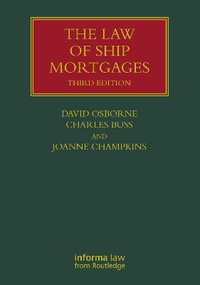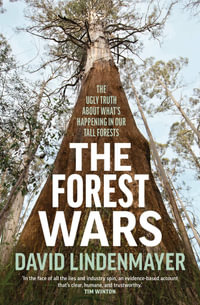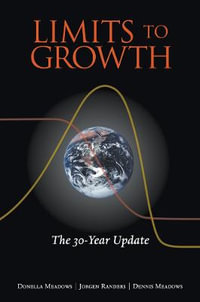| Preface | p. xi |
| Acknowledgments | p. xv |
| Introduction | p. 1 |
| Railroad Vehicles and Multibody System Dynamics | p. 2 |
| Generality | p. 2 |
| Nonlinearity | p. 4 |
| Implementation of Railroad Vehicle Elements | p. 6 |
| Constrained Dynamics | p. 9 |
| Geometry Problem | p. 11 |
| Differential Geometry | p. 12 |
| Rail and Wheel Geometry | p. 14 |
| Contact Theories | p. 17 |
| Creep Forces | p. 17 |
| Wheel/Rail Creep Theories | p. 18 |
| General Multibody Railroad Vehicle Formulations | p. 18 |
| Constraint Contact Formulation | p. 19 |
| Elastic Contact Formulation | p. 20 |
| Specialized Railroad Vehicle Formulations | p. 20 |
| Linearized Railroad Vehicle Models | p. 23 |
| Motion Stability | p. 24 |
| Motion Scenarios | p. 27 |
| Hunting | p. 28 |
| Steady Curving | p. 28 |
| Spiral Negotiation | p. 30 |
| Twist and Roll | p. 30 |
| Pitch and Bounce | p. 31 |
| Yaw and Sway | p. 31 |
| Dynamic Curving | p. 31 |
| Response to Discontinuities | p. 32 |
| Dynamic Formulations | p. 35 |
| General Displacement | p. 36 |
| Rotation Matrix | p. 37 |
| Direction Cosines | p. 38 |
| Simple Rotations | p. 41 |
| Euler Angles | p. 41 |
| Euler Parameters | p. 45 |
| Velocities and Accelerations | p. 49 |
| Velocity Vector | p. 49 |
| Acceleration Vector | p. 50 |
| Generalized Orientation Coordinates | p. 51 |
| Singular Configuration | p. 53 |
| Newton-Euler Equations | p. 58 |
| Joint Constraints | p. 62 |
| Spherical Joint | p. 62 |
| Revolute Joint | p. 63 |
| Cylindrical Joint | p. 64 |
| Prismatic Joint | p. 65 |
| Augmented Formulation | p. 66 |
| Trajectory Coordinates | p. 70 |
| Velocity and Acceleration | p. 72 |
| Equations of Motion | p. 74 |
| Embedding Technique | p. 76 |
| Coordinate Partitioning and Velocity Transformation | p. 77 |
| Elimination of the Constraint Forces | p. 78 |
| Reduced-Order Model | p. 78 |
| Interpretation of the Methods | p. 80 |
| Kinematic and Dynamic Equations | p. 80 |
| Augmented Formulation | p. 83 |
| Embedding Technique | p. 84 |
| D'Alembert's Principle | p. 85 |
| Virtual Work | p. 86 |
| Rail and Wheel Geometry | p. 89 |
| Theory of Curves | p. 90 |
| Arc Length and Tangent Line | p. 90 |
| Curvature and Torsion | p. 91 |
| Geometry of Surfaces | p. 92 |
| Tangent Plane and Normal Vector | p. 94 |
| First Fundamental Form | p. 95 |
| Second Fundamental Form | p. 96 |
| Normal Curvature | p. 99 |
| Principal Curvatures and Principal Directions | p. 100 |
| Rail Geometry | p. 103 |
| Definitions and Terminology | p. 106 |
| Geometric Description of the Track | p. 108 |
| Computer Implementation | p. 111 |
| Track Segment Types | p. 112 |
| Linear Representation of the Segments | p. 112 |
| Derivatives of the Angles | p. 114 |
| Track Preprocessor | p. 116 |
| Track Preprocessor Input | p. 117 |
| Numerical Integration | p. 118 |
| Track Preprocessor Output | p. 120 |
| Use of the Preprocessor Output during Dynamic Simulation | p. 121 |
| Wheel Geometry | p. 123 |
| Contact and Creep-Force Models | p. 127 |
| Hertz Theory | p. 128 |
| Geometry and Kinematics | p. 128 |
| Contact Pressure | p. 133 |
| Computer Implementation | p. 138 |
| Creep Phenomenon | p. 140 |
| Wheel/Rail Contact Approaches | p. 145 |
| Exact Theory of Rolling Contact | p. 146 |
| Simplified Theory of Rolling Contact | p. 147 |
| Dynamic and Quasi-Static Theory | p. 147 |
| Three- and Two-Dimensional Theory | p. 147 |
| Creep-Force Theories | p. 147 |
| Carter's Theory | p. 147 |
| Johnson and Vermeulen's Theory | p. 149 |
| Kalker's Linear Theory | p. 150 |
| Heuristic Nonlinear Creep-Force Model | p. 153 |
| Polach Nonlinear Creep-Force Model | p. 154 |
| Simplified Theory | p. 156 |
| Kalker's USETAB | p. 159 |
| Multibody Contact Formulations | p. 161 |
| Parameterization of Wheel and Rail Surfaces | p. 162 |
| Track Geometry | p. 163 |
| Wheel Geometry | p. 165 |
| Constraint Contact Formulations | p. 165 |
| Contact Constraints | p. 166 |
| Constrained Dynamic Equations | p. 167 |
| Augmented Constraint Contact Formulation (ACCF) | p. 168 |
| Embedded Constraint Contact Formulation (ECCF) | p. 171 |
| Position Analysis | p. 172 |
| Equations of Motion | p. 173 |
| Elastic Contact Formulation-Algebraic Equations (ECF-A) | p. 174 |
| Elastic Contact Formulation-Nodal Search (ECF-N) | p. 177 |
| Comparison of Different Contact Formulations | p. 178 |
| Planar Contact | p. 179 |
| Intermediate Wheel Coordinate System | p. 181 |
| Distance Traveled | p. 182 |
| Profile Parameters | p. 184 |
| Coupling between the Surface Parameters | p. 185 |
| Implementation and Special Elements | p. 187 |
| General Multibody System Algorithms | p. 188 |
| Constrained Dynamics | p. 188 |
| Penalty and Constraint Stabilization Methods | p. 189 |
| Generalized Coordinates Partitioning | p. 191 |
| Identification of the Independent Coordinates | p. 194 |
| Numerical Algorithms - Constraint Formulations | p. 194 |
| Augmented Constraint Contact Formulation (ACCF) | p. 195 |
| Embedded Constraint Contact Formulation (ECCF) | p. 201 |
| Numerical Algorithms - Elastic Formulations | p. 205 |
| Elastic Contact Formulation Using Algebraic Equations (ECF-A) | p. 206 |
| Elastic Contact Formulation Using Nodal Search (ECF-N) | p. 208 |
| Calculation of the Creep Forces | p. 210 |
| Higher Derivatives and Smoothness Technique | p. 211 |
| Track Preprocessor | p. 214 |
| Change in the Length Due to Curvature | p. 216 |
| Use of the Preprocessor Output during Dynamic Simulation | p. 218 |
| Deviations and Measured Data | p. 219 |
| Track Deviations | p. 220 |
| Measured Track Data | p. 222 |
| Track Quality and Classes | p. 223 |
| Special Elements | p. 225 |
| Translational Spring-Damper-Actuator Element | p. 227 |
| Rotational Spring-Damper-Actuator Element | p. 230 |
| Series Spring-Damper Element | p. 231 |
| Bushing Element | p. 232 |
| Maglev Forces | p. 236 |
| Electrodynamic Suspension (EDS) | p. 236 |
| Electromagnetic Suspension (EMS) | p. 237 |
| Modeling of Electromagnetic Suspensions | p. 237 |
| Multibody System Electromechanical Equations | p. 240 |
| Static Analysis | p. 242 |
| Augmented Constraint Contact Formulation | p. 242 |
| Embedded Constraint Contact Formulation | p. 244 |
| Line Search Method | p. 245 |
| Continuation Method | p. 246 |
| Numerical Comparative Study | p. 247 |
| Simple Suspended Wheelset | p. 247 |
| Complete Vehicle Model | p. 248 |
| Specialized Railroad Vehicle Formulations | p. 255 |
| General Displacement | p. 236 |
| Trajectory Coordinate System | p. 256 |
| Body Coordinate System | p. 258 |
| Generalized Trajectory Coordinates | p. 259 |
| Velocity and Acceleration | p. 260 |
| Velocity of the Center of Mass | p. 260 |
| Acceleration of the Center of Mass | p. 261 |
| Angular Velocity and Acceleration | p. 262 |
| Equations of Motion | p. 264 |
| Trajectory Coordinate Constraints | p. 265 |
| Numerical Example | p. 266 |
| Use of the Cartesian Coordinates | p. 269 |
| Single-Degree-of-Freedom Model | p. 272 |
| Two-Degree-of-Freedom Model | p. 277 |
| Linear Hunting Stability Analysis | p. 280 |
| Model 1 | p. 287 |
| Model 2 | p. 288 |
| Creepage Linearization | p. 291 |
| Background | p. 291 |
| Transformation and Angular Velocity | p. 295 |
| Matrix Identities | p. 295 |
| Definition of the Angular Velocity | p. 296 |
| Euler Angles | p. 298 |
| Linearization Assumptions | p. 300 |
| Longitudinal and Lateral Creepages | p. 301 |
| Spin Creepage | p. 305 |
| Newton-Euler Equations | p. 306 |
| Concluding Remarks | p. 309 |
| Contact Equations | p. 313 |
| Elliptical Integrals | p. 319 |
| References | p. 321 |
| Index | p. 333 |
| Table of Contents provided by Ingram. All Rights Reserved. |
























